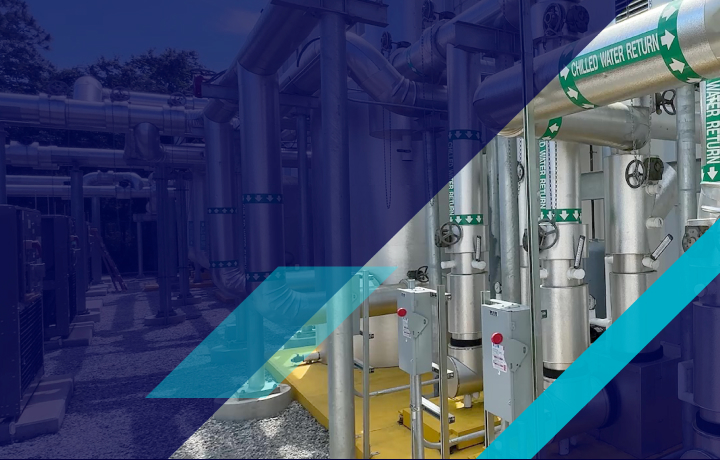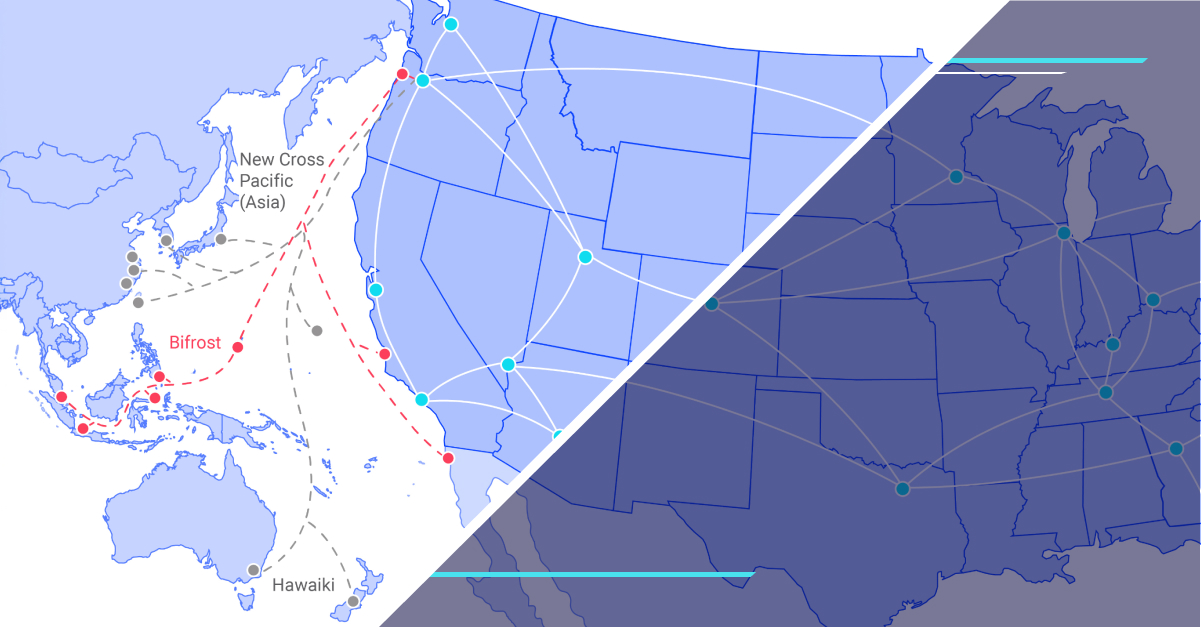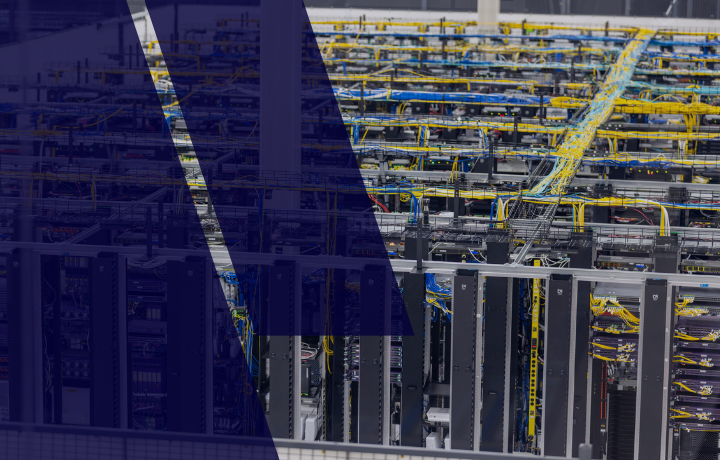How does DRaaS reduce downtime?
A comprehensive guide
When your systems go down unexpectedly, it's not just annoying; it costs you money, disrupts your operations, and can damage your customers' trust. Disaster Recovery as a Service (DRaaS) gives your IT team a powerful way to respond quickly when things go wrong, keeping your systems available, your data protected, and disruptions minimal.

This guide shows exactly how DRaaS can minimize your downtime. We'll walk through the technology, highlight the benefits for reducing outages, and give you practical strategies to implement DRaaS effectively in your organization.
What is Disaster Recovery as a Service (DRaaS)?
At its core, DRaaS provides your company with a pre-configured, ready-to-activate recovery environment hosted by a third-party provider, typically in the cloud. If your primary data center or IT systems face an outage (whether from hardware failure, cyberattack, natural disaster, or human error), DRaaS lets you quickly fail over critical operations to this backup environment. This approach replaces slow, often unreliable manual recovery processes with a faster, more automated, and scalable solution specifically designed to prevent extended downtime.
(If you're entirely new to the concept, this article on what is DRaaS breaks it down clearly, covering how it works, why it matters, and what to expect from a DRaaS provider.)
The importance of DRaaS in business continuity
Downtime affects far more than just your IT department—it impacts your revenue, customer satisfaction, productivity, and brand reputation. DRaaS forms a critical part of your continuity planning because it gives you a dependable, often automated method for rapid system recovery. It helps your organization meet demanding recovery objectives without overwhelming your internal teams, especially during high-stress crisis situations, directly contributing to better overall uptime.
How downtime affects organizations
Even brief outages can derail your operations. Transactions stop, customer support becomes unavailable, project deadlines slip, and employee productivity drops. In highly regulated industries like finance or healthcare, the consequences escalate quickly, potentially including fines, legal action, and loss of certifications. DRaaS directly reduces these risks by giving your organization the tools and processes needed for a quick, confident response when systems inevitably fail.
Understanding downtime
While often associated with major disasters, downtime can be subtle yet consistently disruptive. Whether it's a complete system outage or persistently slow application performance, the result is the same: lost productivity, frustrated users, and IT teams rushing to restore normal operations.
Definition and types of downtime
Simply put, downtime is any period when a system, application, or critical service is unavailable or fails to perform as expected. It manifests in various forms:
- Unplanned downtime: Sudden events like server crashes, cyberattacks, power outages, or network failures.
- Planned downtime: Scheduled interruptions for maintenance, upgrades, or patching.
- Partial downtime: Some features or services are unavailable while others remain functional.
- Complete downtime: Total inaccessibility of a system or application.
Each type disrupts operations, but all carry significant business risk if recovery isn't swift and effective.
Causes of downtime in IT systems
Downtime can come from many sources—some preventable, others not. Knowing the common triggers helps you build a better response plan.
Human error
Even with strong processes, mistakes happen. A misconfigured setting, an accidental deletion, or a missed patch can take your systems offline in seconds. While you can't eliminate human error completely, DRaaS helps minimize the impact when it does occur.
Cybersecurity threats
From ransomware to phishing attacks, cybersecurity threats increasingly cause unplanned downtime. If your systems are compromised, recovery becomes urgent. DRaaS can help you isolate and restore clean environments quickly so threats don't spread further or keep your systems offline longer than necessary.
Hardware failures
Servers, storage devices, and networking equipment all have physical limits. Whether due to aging equipment, overheating, or power issues, hardware failures account for many downtime incidents. A solid recovery strategy ensures your services keep running, even if critical components fail.
Natural disasters
Floods, fires, storms, and other natural events are impossible to predict and often affect entire facilities. Off-site replication and cloud-based recovery through DRaaS allow your operations to continue even if your primary location is temporarily (or permanently) unavailable.
The role of DRaaS in reducing downtime
When outages happen, the clock starts ticking. Every minute of downtime increases pressure on your IT teams, impacts your customers, and reduces your revenue. DRaaS changes this equation by giving you a recovery environment that's already prepared, so you can get systems back online fast without starting from scratch.
How DRaaS works
DRaaS replicates your data and applications to a secure off-site location. When an outage occurs, you can fail over to this environment and keep operations running while you fix or rebuild your primary systems. Most providers offer different service models, from fully managed to self-service. The right option depends on how much control your team wants and how much hands-on support you need during an incident.
Key features
Effective DRaaS solutions typically include:
- Continuous data replication, so backups are always up to date
- Automated failover and failback, to reduce manual work
- Scalable recovery environments, for everything from single apps to full infrastructure
- Built-in compliance and encryption, to protect sensitive data
Service models of DRaaS
Not every organization needs the same level of control or support during a disaster. DRaaS typically comes in three service models, giving you flexibility based on your internal resources and recovery goals:
- Managed DRaaS: The provider handles everything, including setup, monitoring, and execution of your recovery plan. It’s ideal if you have a lean IT team or want to offload the responsibility completely.
- Assisted DRaaS: Your team manages day-to-day operations, but the provider steps in during failover and recovery. This is a good middle ground for teams that want control but still need help during high-pressure moments.
- Self-service DRaaS: You get access to the recovery environment and tools, but it’s up to your team to manage and execute the plan. Best for organizations with the internal expertise and time to manage disaster recovery on their own.
If you’re still evaluating which model fits best, this overview of disaster recovery as a service breaks it down in more detail.
Benefits of implementing DRaaS
Putting DRaaS in place isn’t just about being prepared; it’s about making recovery smarter, faster, and less stressful.
Improved Recovery Time Objectives (RTO)
The faster you recover, the less impact downtime has on your business. DRaaS helps you meet aggressive RTO and RPO goals by automating much of the failover process and reducing delays from manual tasks or equipment setup.
Enhanced data security and compliance
Security and compliance don't pause during a crisis. DRaaS providers typically follow strict protocols for encryption, data access, and regulatory alignment, helping you meet requirements even during recovery events.
Cost-effectiveness compared to traditional solutions
Traditional disaster recovery setups often require duplicate hardware, complex maintenance, and high operational overhead. DRaaS simplifies this by moving recovery infrastructure to the cloud and allowing you to scale it as needed. For many teams, it’s a more cost-effective strategy for disaster recovery and protection.
Strategies for reducing downtime with DRaaS
Simply subscribing to DRaaS isn't enough; maximizing its effectiveness requires strategic planning, careful selection, and ongoing management. These steps are crucial to ensure the service reliably helps reduce your downtime.
Selecting the right DRaaS provider
Not all DRaaS offerings are created equal. Choosing the right partner can mean the difference between a smooth recovery and a stressful, disorganized scramble.
Factors to consider in a DRaaS provider
Here are a few questions worth asking as you evaluate your options:
- What is your proven track record with businesses of our size and industry?
- How quickly and reliably can failover occur? What automation is involved? How do you help meet specific RTO/RPO goals?
- Do you offer robust compliance support and understand our specific regulatory needs?
- Is expert 24/7/365 support available during testing and actual disaster events?
- Can you assist with DR planning, design, and regular testing, or only provide the platform? (Consider providers offering Disaster Recovery Design and Planning for holistic support).
Integrating DRaaS into existing IT infrastructure
DRaaS should fit into your current environment, not the other way around. A good provider will work with your team to identify what needs protection, how recovery will be triggered, and how systems will reconnect after failover. This process includes mapping out dependencies, setting clear failover priorities, and ensuring your applications run smoothly in the recovery environment. It should also include clear documentation so nobody is guessing during high-stress situations.
Testing and maintaining DRaaS solutions
Setting up DRaaS is just the beginning. To effectively reduce downtime, your recovery plan must work, and testing is the only way to confirm this.
Importance of regular testing
Testing isn’t about checking a box. It’s about making sure your recovery process works the way you expect it to. Regular testing builds confidence, uncovers weak points, and helps your team respond faster if and when something actually goes wrong.
Common testing methods
A few ways to test your DRaaS solution:
- Scenario exercises: Walk through recovery scenarios with your team to confirm roles, steps, and timing.
- Partial failover tests: Spin up a subset of systems in the recovery environment to validate replication and access.
- Full-scale simulations: Run a complete failover (in a controlled environment) to test every piece of the plan from end to end.
Testing may feel like extra work, but it’s often the key to reducing recovery time in a real disaster. Many DRaaS providers also offer disaster recovery best practices and support to help guide this process.
Developing a comprehensive disaster recovery plan
DRaaS is a powerful tool within your broader Disaster Recovery (DR) plan. This plan must clearly define:
- Scope: Which systems/applications are protected by DRaaS?
- Triggers: What events initiate a failover?
- Procedures: Step-by-step actions for failover and failback.
- Roles: Who is responsible for each action?
- Communication: How are internal teams and external stakeholders notified?
Your plan should be simple enough to act on quickly, but detailed enough to avoid confusion. If you're looking for a place to start, Flexential offers resources on business resiliency and DRaaS that can help shape your approach.
Lessons learned from DRaaS implementations
Organizations that successfully reduce downtime with DRaaS share one thing: they treat disaster recovery as an ongoing process, not a one-time project.
Here are a few takeaways from teams that have implemented DRaaS effectively:
- Preparation matters more than prediction. The cause of downtime isn't always what you expect. The most resilient teams focus on recovery speed and clarity, regardless of the scenario.
- Testing uncovers the gaps that plans can’t. Even the best-documented strategy can fall short without regular, real-world testing. It’s often during these tests that teams discover configuration issues, missed dependencies, or unclear roles.
- Support is key during a crisis. Teams that partner with experienced DRaaS providers often report faster recoveries and fewer missteps, especially when under pressure.
If you’re still weighing your options or trying to improve your current setup, our article on myths about DRaaS might help clear up a few common misunderstandings before they create problems down the line.
Key takeaways and more DRaaS resources
Downtime isn’t just inconvenient; it’s costly, stressful, and often avoidable. DRaaS helps you minimize that risk by providing fast, secure recovery options that don’t require a full rebuild or round-the-clock scrambling from your IT team.
Want to learn more or take the next step? Here are a few helpful resources to explore:
- Disaster recovery as a service
- Disaster recovery design and planning
- Why choose cloud DRaaS
- BAAS vs DRaaS
If you’re ready to talk strategy or explore how Flexential can support your disaster recovery goals, contact our team today.





